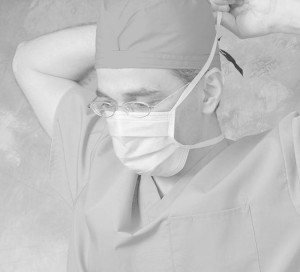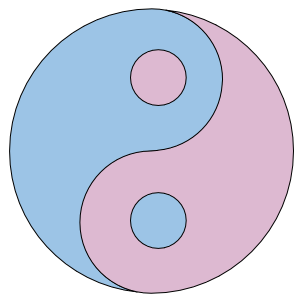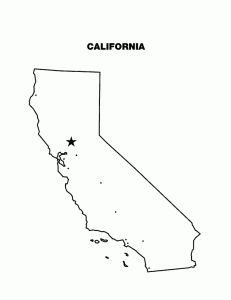Archive for the ‘Orange County hair transplant’ Category
Wednesday, August 26th, 2009
Hair loss supplement Biotin is vitamin H (B7) with the chemical formula C10H15N2O3S (you don’t have to memorize it!). It is a water-soluble B-vitamin complex. B-vitamins or Biotin is necessary for healthy cell growth, the metabolism of fats and amino acids, and the production of fatty acids. It plays a role in the acid cycle or the process by which biochemical energy is generated during aerobic respiration. It’s often recommended for use in strengthening hair and nails. It can be found in many cosmetic and health products for hair and nails as well.
Now that we understand Biotin a little bit better, now we can say whether we recommend it or not. Since Biotin is only a vitamin supplement, consumption of this product by healthy individuals will not result in a decrease of hair loss. In fact, intestinal bacteria are produced to consume any excess vitamins in your intestinal tract. Lack of vitamins and minerals may cause hair loss in people with mal-absorption but normal individuals need not worry.
Tags: B-complex, biotin, hair loss, hair loss product, hair loss treatment, hair loss vitamin, vitamin B7, vitamin H
Posted in Bakersfield hair transplant, hair loss medication, hair loss products, men hair restoration, Orange County hair transplant, women hair loss | No Comments »
Saturday, August 15th, 2009
 In our previous blogs we’ve touched on the subject of “best hair transplant doctor” and how to choose one. This is one of the most addressed topics so we see it fit to talk about it once more. Our best suggestion for any and all patients is to look into the quality of work and not the quantity that the work will be. There is more to this process and we’ll explain as we go. In our previous blogs we’ve touched on the subject of “best hair transplant doctor” and how to choose one. This is one of the most addressed topics so we see it fit to talk about it once more. Our best suggestion for any and all patients is to look into the quality of work and not the quantity that the work will be. There is more to this process and we’ll explain as we go.
Searching for a good hair restoration surgeon can be a tedious job. Large cities like Los Angeles and Orange County have a large network of cosmetic and hair transplant referrals. The hair restoration business is still considered very new and continues to evolve as new findings come to light. Because of this the level of surgical experience can vary greatly between all hair transplant surgeons vastly. Choosing a surgeon whether for cosmetic plastic surgery or hair restoration should not be based solely on experience but by the quality of their work. Statements like “best and most experienced hair transplant surgeon” don’t make the statement true but you have the right to see for yourself.
The best way to know if the surgeon is the best option for your hair transplant is by knowing more about the surgeon and by seeing or speaking with them personally. Most hair transplant clinics offer a free initial consultation and can be with the doctor themselves. By doing this you get to experience the doctor first hand. This way you can truly appreciate a good technique from a knowledgeable doctor when you see one.
One of the last suggestions is to do research on the practicing surgeon and the procedures available. Some locations, like ours, specialize in state-of-the-art exclusive follicular unit transplants (FUT), mega sessions for patients with extensive hair loss and follicular unit extraction (FUE) or minimally invasive hair restoration. This procedure is used to selectively extract hair grafts from the donor area with removing a strip as in traditional FUT procedure.
The hair transplant surgeon and medical director of US Hair Restoration sees a variety of patients with different hair transplant results from other facilities. Some of which can be noted very highly and others that would make you question the quality of work. All in all, the end result is that it would be unfair and hard to say who the best hair transplant surgeon in Southern California is. Today’s cosmetic market makes it easy for anyone to look their best. Modern hair restoration techniques are in high demand is most metropolitan areas and the demand keeps growing. All in all, we highly suggest that anyone considering hair restoration surgery to get educated about hair restoration first and meet with a hair transplant surgeon with a list of questions you want answered personally. Make sure this surgeon is someone you can trust.
Tags: best hair restoration, Best hair transplant, best hair transplant doctor, Best hair transplant doctors, best hair transplant in Los Angeles, best hair transplant surgeon, hair transplant surgeon, quality hair transplant
Posted in California hair transplant, Orange County hair transplant, Uncategorized | No Comments »
Thursday, June 25th, 2009
For previous hair transplant patients, scar revision is the process of correcting or minimizing the scar appearance left after a hair transplant procedure. In the case of a patient email we received, his scar seems to be a bit wider on one side compared to the other. His transplant was performed in a different clinic and the result of the wide scar was of natural effect. He asks, “Is it better to do only half and not touch the good side so to speak?”
There are a couple of techniques that can be used to correct this issue. The most common is a simple excision and closure of the scar which may reduce the scar’s width. Considering the scar is behind the neck area, BOTOX can be applied to prevent future stretching. Some patients may require what is known as trichophytic closure which allows hair to grow into the scar further minimizing the appearance of the scar. Finally, the most effective way of eliminating scar visibility is by means of an FUE (follicular unit extraction) procedure to fill in the scar left behind by the strip procedure.
The maturation or completely healing of a scar is a timely occurrence. Scars can sometimes take as long as 6 months to fully develop and can continue to evolve even after that time but at a slower rate. Because of how long scars can take to fully develop, we avoid during any type of scar revision surgery until at least 6 months after wound closure. We offer free donor scar revision consultation at our Orange County hair restoration office.
Tags: Botox, donor scar revision, follicular unit extraction, fue, hair transplant donor scar, hair transplant scar revision, scar revision, stretched scar, strip procedure scar, trichophytic closure
Posted in after hair transplant, donor scar, hair transplant, Hair Transplant Procedure, men hair restoration, Orange County hair transplant | No Comments »
Tuesday, May 19th, 2009
 “How can a male hairline be converted to a female pattern?” “How can a male hairline be converted to a female pattern?”
Although not always a very typical question or request, it is generally an issue most male to female transgender patients have to deal with. This is usually due to maturation of the hairline which may include recession of the frontal corners in mature male patterned hairline. This is what defines the frame of a male face as “masculine”. This can easily be restored through hair transplant surgery through follicular unit transplantation.
“I am already taking Propecia and Spironolactone to block my testosterone effect.”
Anti-testosterone medication can help minimize the effect of miniaturization or the balding of the hair connected with male patterned baldness but it does not stop the balding process completely. This is due to testosterone still being produced by the testicles. Post operative transgendered patients whom have had removal of their testicles as part of a transgender procedure can eliminate testosterone. This in turn can stop the process of male pattern hair loss in patients who are genetically prone to DHT (dihydrotestosterone).
Your hair transplant surgeon should have a good understanding of facial proportion and female hairline shaping in the process of transsexual hair transplantation. That is why transsexual hair transplantation should be treated meticulously and professionally. There are many different variants between a male and female hairline. This includes the location of the hairline from eyebrow level at mid frontal and laterals; temples need to be restored in a complete female shape; direction and orientation of hair shafts are also different between men and women. These little details and features must be meticulously cared for and that’s what can be expected through quality hair restoration for transgendered patients.
A hair transplant procedure is a good recommendation if you are looking into changing your hairline from a mature male hairline to a feminine one. This may also apply if you are suffering from male patterned baldness. We do recommend that you continue your regular medical treatment of anti-testosterone medication and a hair transplant to reshape the frame of your face. Maximum fullness and a perfect female pattern can generally be achieved through more than one procedure.
Tags: hair transplant surgeon, M-F Transgendered, trans gender, trans gender hair transplant surgeon, Trans women, transexual, transgender, transgender hair transplant, transse, transsexual, transsexual hair transplant
Posted in California hair transplant, hair loss medication, hair transplant, men hair restoration, Newport Beach hair transplant, Orange County hair transplant | No Comments »
Wednesday, May 6th, 2009
A patient from India once wrote to me in regards to preventing male pattern baldness. He is 18 years old and has noticed that his hair is falling very rapidly. He also noted that he fears that his diet might also be playing a role in his hair loss since he finds himself to be too lean. He wants suggestions on how to restore his hair since he doesn’t want to meet with the same fate his father did with his hair.
In most cases hair loss is genetic and, in his case, he seems to be experiencing the early stages of male pattern baldness. Sometimes malnutrition may cause some form of hair loss but that is only experienced in patients whom are severely deficient in some particular elements.
We do recommend that you see a doctor to confirm the diagnosis of the hair loss especially if your hair loss does not follow a typical male pattern. Male pattern type baldness is seen in men as early as their 20′s and will continue to recede or deteriorate for many years. There are many products out on the market claiming to restore hair loss and re-grow hair but none of them have been truly proven. The only exceptions are minoxidil and finasteride and both have been approved by the FDA to be safe to use.
Tags: finasteride, male patterned baldness, Preventing male pattern baldness, propecia
Posted in California hair transplant, hair transplant, Orange County hair transplant | No Comments »
Wednesday, March 18th, 2009
 In a recent article published in the European Journal of Dermatology, a group in Kang et has been working with a native plant known as Schisandra Nigra. This plant is native to the Jeju Island in South Korea and is being evaluated for its rumored effects on hair by natives. The study is being conducted on rat hair and is showing some promise. In a recent article published in the European Journal of Dermatology, a group in Kang et has been working with a native plant known as Schisandra Nigra. This plant is native to the Jeju Island in South Korea and is being evaluated for its rumored effects on hair by natives. The study is being conducted on rat hair and is showing some promise.
Tests were conducted on rat vibrissa follicles by treating them with 85% ethanol extract of S. Nigra (Schisandra Nigra) where the most evident effect was the vibrissa follicle’s hair fiber length increased significantly. In addition to the effects of the EtOH (ethanol) extract, anagen (growth phase) progression of the hair shaft was induced. Even more so the S. Nigra extract also increased both the expression of proliferating cell nuclear antigen in the bulb matrix region and the proliferation of immortalized vibrissa dermal papilla cells with more activity on hair follicle cells.
To help researches determine what mechanism in the S. Nigra plant helps induce hair growth, they examined its relationship with the TGF-beta2 complex. This is a signal pathway known to regulate catagen induction. Catagen induction is the phase that comes after the hair cycle’s growth phase.
The documented results of S. Nigra application for 7 days was the lowering of TGF-beta2 expression in the bulb matrix region in comparison to that of the control follicles expected to be in the anagen-catagen transition phase. This suggests that S. Nigra potentially promotes hair growth by deregulating TGF-beta2 as well as the proliferation of dermal papilla.
Put simply, this plant’s extracts stop hair follicles from going into their resting phase. This means hair will continue to grow and the number of growing hairs at one time will be higher. Still, these findings cannot be proven to truly work on humans. We still need more conclusive studies to be made to prove the true effects of this plant on human hair growth.
We at our Orange County California hair transplant offices will keep you updated with the most recent finings on hair restoration methods and techniques. Because of the lack of sufficient or adequate evidence, we do not recommend the use of this or other herbal hair loss products for treatment of male or female patterned hair loss at this point. Will continue to monitor any additional findings or new updates in the world of hair restoration and keep our readers posted.
Tags: anagen, catagen, growth phase, herbal hair loss product, rat hair growth, S. nigra, S. Nigra extract, Schisandra Nigra, telogen, TGF-beta2
Posted in California hair transplant, hair loss products, men hair restoration, Orange County hair transplant, women hair loss | No Comments »
Tuesday, February 24th, 2009
We received an email from one of our overseas patients in regards to his patchy hair loss. He describes that he has experienced these episodes since the age of 12 years. He is now 36 years old. They had attested his patchy hair loss to Alopecia Areata (AA) but his hair loss which was seen all over his body also included swelling, pain and discoloration. Throughout the years he had been prescribed with different types of topical medications as well as a hormonal injection treatment. All of these treatments did not permanently correct his situation but in most cases did give him temporary relief.
Our best assessment is that although he is experiencing patchy hair loss as is seen in Alopecia Areata (AA) this condition is normally painless and skin shape and color remain the same. Other forms of hair loss conditions with similar symptoms as his are more closely related to Alopecia Cicatricial. This skin condition inflames the affected area and causes hair loss in that same affected area. A good dermatologist can best diagnose these types of skin conditions by means of biopsy. After the assessment we can then give you the best plan of attack for future hair restoration.
If you have any similar questions on hair loss and hair restoration, please contact us through our California Hair Restoration website.
Tags: alopecia, alopecia areata, alopecia cicatricial, patchy balding, patchy hair loss
Posted in men hair restoration, Orange County hair transplant | No Comments »
Monday, February 9th, 2009
 Many of our patients and the readers of our hair transplant blog often ask about celebrity hair transplants, their hair loss problems and hair restoration. California and in particular Los Angeles and Hollywood is the place for celebrities so hearing questions on celebrity hair transplantation is not unusual. We will not be able to reveal the name of the people who had a hair transplant; however gossip never sleeps in Hollywood. Many of our patients and the readers of our hair transplant blog often ask about celebrity hair transplants, their hair loss problems and hair restoration. California and in particular Los Angeles and Hollywood is the place for celebrities so hearing questions on celebrity hair transplantation is not unusual. We will not be able to reveal the name of the people who had a hair transplant; however gossip never sleeps in Hollywood.
Internet is full of the names of celebrities who many have had a hair transplant or plug surgery in the past. Many male celebrities with hair transplantation has been recognized and revealed by photographers. Many of celebrities had old and bad hair transplants and the others with the changes that were captured in the pictures from before and after hair transplants. Although wigs and hair systems have become very realistic these days, high resolution photography can reveal them at times. Many known celebrities had old technique hair transplants that used to be detectable and easy to distinguish. That is why they are bound to a certain hair style to cover their unnatural hairline. Many others have the problem fixed by doing a repair hair transplant using the follicular unit transplant. The good news is that many patients with unnatural hair line from old hair transplants could improve their appearance if their donor hair was not violated with old techniques of hair restoration or plug surgeries.
Hollywood, Los Angeles, Beverly Hills and Orange County are among the most concentrated areas in terms of the number of hair transplant surgeons. Keeping a good look in Hollywood world is not only important, but it could be life changing for many people especially if they are one of the people who is constantly followed by curious reporters.
US Hair Restoration
Orange County Hair Transplant
888-302-8747
info@ushairrestoration.com
Tags: hair system, hiar transplant, los angeles, wig
Posted in men hair restoration, Newport Beach hair transplant, Orange County hair transplant | No Comments »
Wednesday, January 21st, 2009
 What is the best hair loss product? We are hearing many things about new hair loss products every day. Many contain active ingredients that may help hair, some don’t have anything for hair loss treatment and some may be harmful for your hair. Here is what one of my patients asked me and I answered in the blog about one of the hair loss product. What is the best hair loss product? We are hearing many things about new hair loss products every day. Many contain active ingredients that may help hair, some don’t have anything for hair loss treatment and some may be harmful for your hair. Here is what one of my patients asked me and I answered in the blog about one of the hair loss product.
The patient has been experiencing male pattern baldness for some years now. He used Rogaine, it worked at first but now no longer respond to it. Propecia is tried too, but had to stop it for the side effects. Patient is saving money to be able to get a good quality hair transplant and meanwhile is wondering whether or not hair loss products can help him keep his own hair. In this case he is using Revivogen.
I generally research about all incoming questions by reviewing the websites for the hair product. For similar patients, I really like to know what kinds of side effects you experienced with finasteride (Propecia), because finasteride is an effective hair loss medication, although it has been blamed unfairly for many side effects. I put most my Los Angeles and Orange County Hair Restoration Clinics patients on finasteride when they have significant miniaturization. Finasteride can help prevent further hair loss. Some of your hair loss might be irreversible by medication and you may need hair restoration surgery, but at least you can stop further hair loss by the time that you can restore your hair surgically. Revivogen is a hair loss product with some natural compounds that mainly inhibit 5-Alpha-Reductase. 5-Alpha-Reductase is the enzyme that converts testosterone to dihydroxytestostrone (DHT). Prevention of DHT production can slow down hair loss in male pattern baldness.
Saw Palmetto Extract is a good component of this hair loss product, which is a DHT blocker and is used systemically for prevention of both hair loss and prostate enlargement. The efficacy of its topical product is not studied as extensively in large human experiments. Other components include a variety of fatty acids like: Gamma Linolenic acid (GLA), Alpha Linolenic acid (ALA), Linoleic Acid and Oleic Acid without strong human research on their absorption from skin level as well as their efficacy on human hair growth. Other components such as Azaleic acid, Vitamin B, Zinc, Beta-Sitosterol and Procyanidin Oligomers have shown some effects on the DHT production in labs, but the extensive studies to compare their effect with more researched medical treatments for hair loss is lacking.
One problem is the absorption of the active ingredients, which is not studied extensively. I personally have not heard anything about any serious side effects of Revivogen, but I would rather have more information about long term studies, which are published in peer reviewed medical journals, before I can recommend the product to my patients. There are many hair loss products out there, which are safe, but you do not have a life time to go around and try them all to find out whether they have any effect on your hair or not.
A good hair specialist that you can trust can help you tremendously. Patient believe that since they are not spending much money on hair loss product and hair loss products are more affordable than hair transplant, but they don’t realize that most time they may not get any result from some hair loss products. Your hair loss doctor should be able to document the level of your current hair loss and miniaturization of hair and can come up with a master plan, which includes medication treatment, surgery and even cosmetic alterations that can make your hair look better. Side effects of the medications that you tried before need to be re-evaluated closely by your doctor.
You want to make sure that the side effects of finasteride are for real and don’t take away this powerful, FDA approved hair loss treatment. If you have no alternatives, your doctor may have some suggestions for your individual condition to preserve whatever hair you have with a hair loss product with minimal side effects.
Tags: hair loss product, hair loss treatment, minoxidil, Revivogen, saw palmeto
Posted in hair loss products, men hair restoration, Orange County hair transplant, Uncategorized | No Comments »
Sunday, January 18th, 2009
Bakersfield, California: US Hair Restoration hair transplant clinic soon will start its first clinic in the city of Bakersfield in California. US Hair Restoration already has three other locations at Encino, Beverly Hills and Orange County. Dr. Parsa Mohebi the medical director of US Hair Restoration stated that since we are getting many patients for hair transplant from the city of Bakersfield in our Encino and Beverly Hills hair transplant offices, we decided to make it easier for our hair transplant patients from Bakersfield to find access to our services in their town.
Hair Transplant Surgeon Restores Patients Hair and Self-Confidence was the title of Dr. Mohebi’s recently published article in the the magazine of Beverly Hills Courier. In the article Dr. Parsa Mohebi, hair transplant surgeon and medical director of US Hair Restoration discusses the modern hair transplant techniques and the innovation that a perfect hair restoration is made of with the most natural results possible.
US Hair Restoration announced the opening of its hair restoration clinic in the city of Bakersfield, CA to serve Southern California, particularly the northern cities of Los Angeles such as Sacramento and Fresno and north of the San Fernando Valley. US Hair Restoration hair transplant clinics are also accessible and being used by the residents of Las Vegas, Nevada and Phoenix, Arizona.
From Beverly Hills Courier magazine:
We all know that nothing looks better than a full head of hair, and one of the best people to provide it is Dr. Parsa Mohebi, medical director of US Hair Restoration.
Dr. Mohebi specializes in several hair-transplant procedures:
- Follicular Unit Transplant (FUT) is the gold standard of hair-transplant surgery, Mohebi said, giving very natural results. A strip of donor scalp is removed and the follicles are prepared under microscopes and distributed in the bald area in the natural direction and orientation.
- Follicular Unit Extraction (FUE), also called non-invasive hair-restoration surgery, uses special biopsy devices to extract individual follicular units without having to remove a strip of skin; so there is no linear scar.
Not everyone needs FUE or follicular unit extractions hair transplant Mohebi says. But people who want to shave their head in the future for any reason may consider FUE because there is no visible evidence of surgery on the back of their head. There’s nothing to suture, and the small dot wounds are not detectable a few days after surgery.
Since the newly placed follicles are so fragile, patients return the next day to get their hair washed professionally, given special shampoo and taught how to take care of their hair at home. After five days, no special care is needed, Dr.Mohebi said.
Ten days after the surgery, patients return to have the donor site checked and staples removed for those who had them. Hair starts growing after three months, and is long enough to style and comb after ten to twelve months. The third follow up is at 10 months after the procedure.Continuing to pioneer in the field, Dr. Mohebi is the inventor of the Laxometer, a device to measure the laxity or mobility of the scalp. Laxity of the scalp is key in determining the size of the donor strip so that enough can be removed for bigger cases, and the wound can be closed without too much tension and the scaring will be minimal.
US Hair Restoration has Southern California Clinics in Encino, California, Orange County, Beverly Hills and now Bakersfield. US Hair Restoration also offers hair transplant services in Dubai, United Arab Emirates (UAE). To help people stay abreast of all that’s happening in the field of hair restoration, and to answer questions ( heard from Europe and China) Dr. Mohebi maintains the US Hair Transplant Blog to answer your hair loss and hair transplant questions.
Tags: Bakersfield hair transplant, California hair transplant, Dr. Mohebi, hair restoration clinic, hair transplant clinic, hair transplant surgeon, Orange County hair transplant
Posted in Bakersfield hair transplant, men hair restoration, Newport Beach hair transplant, Orange County hair transplant | No Comments »
|
|





